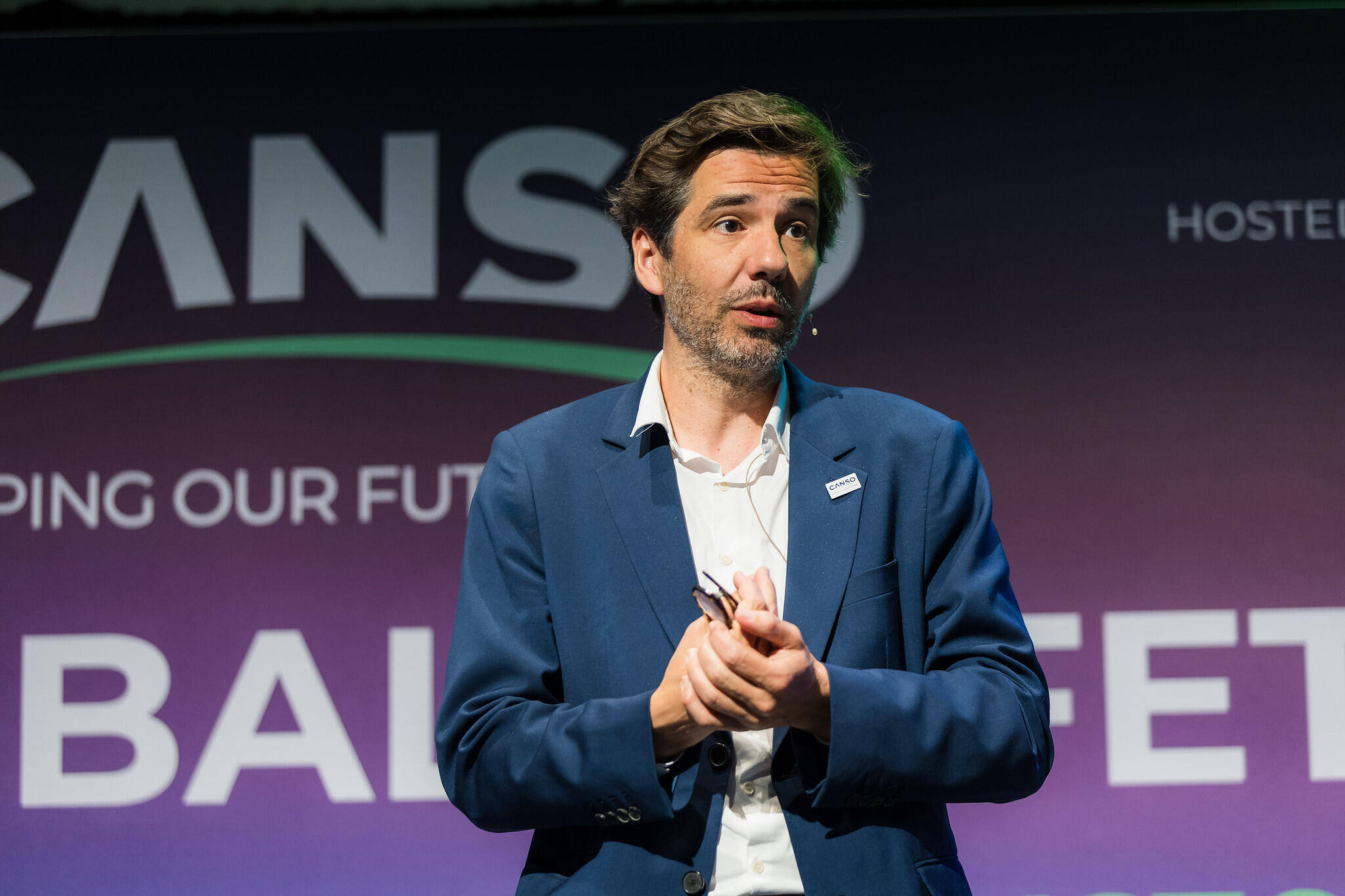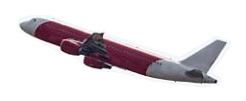
Eduardo Garcia, CANSO Senior Manager Future Skies, explains how the CATS Global Council is approaching flight governance in the age of automation.





These developments stretch current rules and responsibilities beyond their design limits, particularly in areas such as separation management, situational awareness and accountability. There is a risk that regulatory lag in adapting flight rules could hinder innovation, reduce safety margins or cause fragmentation if not addressed proactively.
A likelihood of high-density operations in certain airspaces.
Growing reliance on digital infrastructure and machine-to-machine coordination
Increasing complexity in performance profiles and mission types
New airspace users operating in previously unserved domains, such as the stratosphere
Rapid growth in uncrewed and autonomous aircraft operation

Rethinking Flight Rules
Aviation is undergoing a transformation unlike any in its recent history.
The skies are beginning to fill not only with traditional commercial aircraft but also with uncrewed vehicles, electric vertical take-off and landing (eVTOL) aircraft, high-altitude platforms and highly automated aircraft systems. Many of these emerging aircraft operate under conditions that were never foreseen by the traditional flight rules designed nearly a century ago.
Today’s flight rules – primarily visual flight rules (VFR) and instrument flight rules (IFR) – were designed for a world of human pilots and legacy aircraft performance.
However, modern aviation is characterised by:
How do we ensure safety, fairness, and efficiency in this increasingly diverse and dynamic airspace? How do we prevent a fragmented or unsafe future?
These questions lie at the heart of the CATS Concept of Operations (CATS CONOPS) for Future Skies, published in April 2025 by the CATS Global Council – an international innovation forum initiated by CANSO. The CATS CONOPS presents a forward-looking vision for a unified, digitally enabled, and globally harmonised airspace system. It outlines a clear four-phase roadmap for transformation, starting from today's baseline and culminating in Phase 3: Highly Automated and Seamless Airspace.
Phase 3 focuses on achieving full integration of diverse operations – crewed, uncrewed, and highly automated – in shared and dynamically managed airspace. But a critical barrier stands in the way: the current flight rules.
The Think Paper identifies several areas where evolution is critical:

Responsibility in Automation-Centric Environments: The roles of pilot, controller and service provider must be redefined in the context of highly automated and remotely managed operations.
Separation Management Beyond Fixed Minima: A shift is needed from static separation standards to dynamic, performance-based frameworks tailored to aircraft behaviour and the risk context.
Mixed-Mode Airspace Integration: Rules must support equitable access and safe interaction among conventional, uncrewed and automated aircraft.
Digital Coordination and Service-Oriented Infrastructure: The future system must transition from platform-centric to digitally enabled, service-based architectures capable of supporting scalable, flexible operations.
Terminology and Legal Clarity: New definitions are needed to reflect digital roles, machine coordination, and distributed responsibilities in automation-led operations.
Key findings
Over the past year, a CATS expert group – comprising members from across industry, regulatory, and research domains – conducted an in-depth review of whether today’s flight rules are fit for purpose in an era of rapid transformation. Their analysis, detailed in the upcoming Think Paper, Seamless Airspace: Are Today’s Flight Rules Ready for the Future of Aviation? highlights the regulatory and operational evolution needed to safely integrate new types of vehicles with increasingly diverse capabilities. As part of this effort, the group also reviewed ongoing research initiatives, recent advancements and practical trials around the world that explore new frameworks for digital coordination, automation-enabled separation and mixed-mode airspace management.

Build an Inclusive and Scalable Ecosystem: High- and low-equipped aircraft must enjoy equal and safe access to airspace. Systems must be designed to support full traffic information, equitable access and practical transition pathways that balance innovation with legacy operations.
Invest in Digital Infrastructure and Cyber Resilience: The development of future-ready CNS capabilities and digital systems that are secure by design must be prioritised. As connectivity increases, cybersecurity and digital trust must be treated as critical infrastructure for safe and scalable operations.
Strengthen Global Regulatory Alignment: Enhanced cooperation through ICAO and regional frameworks will advance harmonised standards that reflect the realities of automation, new actors and emerging responsibilities in airspace management.
Launch Coordinated Demonstration Projects: Real-world demonstrations must validate machine-supported deconfliction, self-separation and interoperable operations across diverse performance and automation levels. International coordination is essential to ensure consistency and scalability.
Develop a Global Transition Roadmap: A globally supported roadmap will guide the transition from current frameworks to a digitally enabled airspace system. This should prioritise foundational projects, such as automated separation trials, digital flight rules prototyping and mixed-equipage integration models.
Advance Research on Future Flight Rules, System Architectures, and Evolving Roles: Targeted research is needed to assess operational concepts, enabling technologies and system architectures that can support next-generation flight rules, including digital coordination, automation-enabled separation and hybrid airspace models. This includes investigating how responsibility, authority and accountability should be allocated among human and digital actors; defining fallback mechanisms; and developing legal and operational frameworks to support safe, fair and transparent role distribution in highly automated environment.
Six strategic steps
In support of this shift, the Think Paper outlines six strategic actions that the global aviation community must take:


Flight rules and airspace structures are not just administrative frameworks. They are the backbone of aviation safety, accessibility and interoperability. If they fail to evolve, the vision of a digitally integrated, automation-enabled future will remain out of reach.
Shaping the future
As the skies grow more crowded and complex, modernising flight rules is no longer optional. It is essential.
The CATS Think Paper, released in summer 2025, sets out a comprehensive pathway. It invites all stakeholders – regulators, ANSPs, operators, manufacturers and airspace users – to engage in coordinated research, policy development and global dialogue.

Close

The rules of the air should reflect the reality of the sky


Eduardo Garcia, CANSO Senior Manager Future Skies, explains how the CATS Global Council is approaching flight governance in the age of automation.
Safety – DG Comment





These developments stretch current rules and responsibilities beyond their design limits, particularly in areas such as separation management, situational awareness and accountability. There is a risk that regulatory lag in adapting flight rules could hinder innovation, reduce safety margins or cause fragmentation if not addressed proactively.
A likelihood of high-density operations in certain airspaces.
Growing reliance on digital infrastructure and machine-to-machine coordination
New airspace users operating in previously unserved domains, such as the stratosphere
Increasing complexity in performance profiles and mission types
Rapid growth in uncrewed and autonomous aircraft operation
Rethinking Flight Rules

Today’s flight rules – primarily visual flight rules (VFR) and instrument flight rules (IFR) – were designed for a world of human pilots and legacy aircraft performance.
However, modern aviation is characterised by:
How do we ensure safety, fairness, and efficiency in this increasingly diverse and dynamic airspace? How do we prevent a fragmented or unsafe future?
These questions lie at the heart of the CATS Concept of Operations (CATS CONOPS) for Future Skies, published in April 2025 by the CATS Global Council – an international innovation forum initiated by CANSO. The CATS CONOPS presents a forward-looking vision for a unified, digitally enabled, and globally harmonised airspace system. It outlines a clear four-phase roadmap for transformation, starting from today's baseline and culminating in Phase 3: Highly Automated and Seamless Airspace.
Phase 3 focuses on achieving full integration of diverse operations – crewed, uncrewed, and highly automated – in shared and dynamically managed airspace. But a critical barrier stands in the way: the current flight rules.
Aviation is undergoing a transformation unlike any in its recent history.
The skies are beginning to fill not only with traditional commercial aircraft but also with uncrewed vehicles, electric vertical take-off and landing (eVTOL) aircraft, high-altitude platforms and highly automated aircraft systems. Many of these emerging aircraft operate under conditions that were never foreseen by the traditional flight rules designed nearly a century ago.


Responsibility in Automation-Centric Environments: The roles of pilot, controller and service provider must be redefined in the context of highly automated and remotely managed operations.
Separation Management Beyond Fixed Minima: A shift is needed from static separation standards to dynamic, performance-based frameworks tailored to aircraft behaviour and the risk context.
Mixed-Mode Airspace Integration: Rules must support equitable access and safe interaction among conventional, uncrewed and automated aircraft.
Digital Coordination and Service-Oriented Infrastructure: The future system must transition from platform-centric to digitally enabled, service-based architectures capable of supporting scalable, flexible operations.
Terminology and Legal Clarity: New definitions are needed to reflect digital roles, machine coordination, and distributed responsibilities in automation-led operations.
The Think Paper identifies several areas where evolution is critical:
Key findings
Over the past year, a CATS expert group – comprising members from across industry, regulatory, and research domains – conducted an in-depth review of whether today’s flight rules are fit for purpose in an era of rapid transformation. Their analysis, detailed in the upcoming Think Paper, Seamless Airspace: Are Today’s Flight Rules Ready for the Future of Aviation? highlights the regulatory and operational evolution needed to safely integrate new types of vehicles with increasingly diverse capabilities. As part of this effort, the group also reviewed ongoing research initiatives, recent advancements and practical trials around the world that explore new frameworks for digital coordination, automation-enabled separation and mixed-mode airspace management.


Build an Inclusive and Scalable Ecosystem: High- and low-equipped aircraft must enjoy equal and safe access to airspace. Systems must be designed to support full traffic information, equitable access and practical transition pathways that balance innovation with legacy operations.
Invest in Digital Infrastructure and Cyber Resilience: The development of future-ready CNS capabilities and digital systems that are secure by design must be prioritised. As connectivity increases, cybersecurity and digital trust must be treated as critical infrastructure for safe and scalable operations.
Strengthen Global Regulatory Alignment: Enhanced cooperation through ICAO and regional frameworks will advance harmonised standards that reflect the realities of automation, new actors and emerging responsibilities in airspace management.
Develop a Global Transition Roadmap: A globally supported roadmap will guide the transition from current frameworks to a digitally enabled airspace system. This should prioritise foundational projects, such as automated separation trials, digital flight rules prototyping and mixed-equipage integration models.
Launch Coordinated Demonstration Projects: Real-world demonstrations must validate machine-supported deconfliction, self-separation and interoperable operations across diverse performance and automation levels. International coordination is essential to ensure consistency and scalability.
Advance Research on Future Flight Rules, System Architectures, and Evolving Roles: Targeted research is needed to assess operational concepts, enabling technologies and system architectures that can support next-generation flight rules, including digital coordination, automation-enabled separation and hybrid airspace models. This includes investigating how responsibility, authority and accountability should be allocated among human and digital actors; defining fallback mechanisms; and developing legal and operational frameworks to support safe, fair and transparent role distribution in highly automated environment.
Six strategic steps
In support of this shift, the Think Paper outlines six strategic actions that the global aviation community must take:

The rules of the air should reflect the reality of the sky


Flight rules and airspace structures are not just administrative frameworks. They are the backbone of aviation safety, accessibility and interoperability. If they fail to evolve, the vision of a digitally integrated, automation-enabled future will remain out of reach.


Shaping the future
As the skies grow more crowded and complex, modernising flight rules is no longer optional. It is essential.
The CATS Think Paper, released in summer 2025, sets out a comprehensive pathway. It invites all stakeholders – regulators, ANSPs, operators, manufacturers and airspace users – to engage in coordinated research, policy development and global dialogue.

